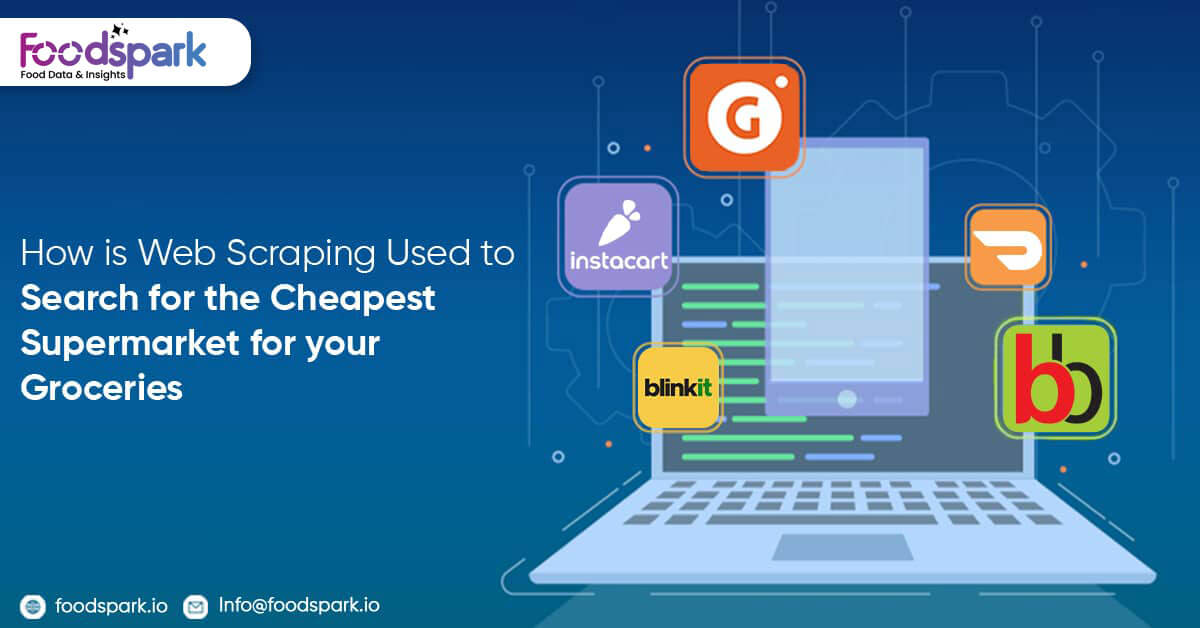Let's talk!
We'de love to hear what you are working on. Drop us a note here and we'll get back to you within 24 hours.

We'de love to hear what you are working on. Drop us a note here and we'll get back to you within 24 hours.

If you’re looking to reduce your grocery bill, web scraping and data mining can help you to find the cheapest supermarket for groceries in your area. Data mining makes it possible to detect the best supermarket by analyzing markets or stores.
Web scraping is a process that allows you to extract information and data from the internet through the use of a website. Data mining also helps companies to learn and gain more knowledge regarding their services, products, and other services they may offer. This process will significantly help you determine the best supermarket for your groceries.
If you’re looking for ways to save money on groceries, you can use web scraping to find the best supermarket for your needs and budget. First of all, what is web scraping? It’s a method used by computer computers to collect data or information from any electronic source available on the internet.
Web scraping is extracting data from a website or online database to search for and discover new information. Web scraping is a valuable tool company, government agencies, and organizations use to search for new things or ideas.

For example, the cheapest supermarket is determined by many factors. The first thing you need to consider when looking for the cheapest supermarket is your location and where you live. If you live in a suburb, it may be better to go with a local market closer to your home.
When choosing the best supermarket, you must select one in your area. The two most important things to keep an eye on are: (1) the price of groceries at local supermarkets and (2) how large or small the supermarkets are compared to each other. The larger supermarkets tend to have more options, but they also cost more than smaller and nearby markets. In most cases, the supermarkets are located on the outskirts of a city.

When you’re shopping for the cheapest supermarket, most of the time, it takes work. You’ll need to sign-up with additional grocery stores to compare prices and see which supermarket is the most cost-effective. The following is an example of how a Grocery Store Price Comparison works:
Analyze the competitor’s price:
You can check the competitor’s price by entering their website address in your internet browser and looking at their weekly ads online. For example, you can find the supermarket’s name and costs for a particular item and compare it with other supermarkets. You can also search for the competitor’s website address and see whether it was found in a web scraping report. You can also use Google or Yahoo to check out their website and find out what groceries they sell, which supermarkets they have agreements with, and how to contact them directly by telephone.

This step aims to improve the revenue and margin for super-competitive categories. You first need to search for the best supermarket and compare prices with other supermarkets (e.g., online competitors, local grocery stores, and online supermarkets) in your area. Next, you need to search for other products in addition to the same product being sold at another supermarket or store. You will have more options because different supermarkets offer different products, goods, and services unavailable at your local supermarket or store.
By changing the category of goods and services you offer, you’ll be able to reduce your prices even more. For example, suppose you’re selling books and DVDs in addition to your regular products and services. In that case, people visiting your website will see more items than other supermarkets. For example, if you’re a wedding store and want to sell flowers and other wedding goods and services simultaneously, you should do so because it will help attract more customers to your business.
The key is for people to invest in different products or goods besides those sold online by competitors or on the internet at local stores.

The purpose of this step is to adjust pricing based on market trends. You need to change the price of your products and services according to current market trends and changes in your industry. For example, if you sell books on the internet, you can change the price of your readers depending on which book is more prevalent at any given time.
You can change your prices based on customer preferences and reactions to recent events and market news (such as current events or information that may affect other sectors). For example, if there is a terrorist attack in one country, oil prices tend to go up, and gas prices go down.

This step aims to keep an eye on competitors’ pricing. You can check online for competitor prices and compare them with your prices to determine the most cost-effective ones. In most cases, the best supermarket will have old products and new products at the same time.
It means that if you sell books, competitors may have books from several suppliers in addition to their books. For example, if they have books from one supplier, they may also have books from suppliers other than that.
If a competitor has a set price for its products or services, you can change your prices in line with market trends. However, if the competitor offers a specific percentage discount for a product or service, you can provide an additional discount to attract more people to buy from you. For example, if competitors offer a specific percentage off for one of their products or services, you can also provide that same discount on your website.
By changing the price of a product or service, you will be able to attract more customers and increase sales on your website.

The purpose of this step is to change pricing based on seasonality. If there is a holiday in the next few months, then some products and services may sell better than others during different times of the year. For example, people may want to buy more winter clothing items, such as sweaters and jackets if it’s cold outside. At the same time, fewer people are clothing for spring and summer sales.
You can change the price of your products based on your competitors’ prices and how many customers you can attract to your website during different times of the year or seasons. You need to plan for events that may affect future demand for a particular product or service.
Based on your industry, determine seasonality and adjust prices to match the demand of different times of the year. You can check online for competitive quotes and compare them with your selections to determine the most cost-effective. By comparing your competitors’ and your quotes, you will know if your pricing is too high or too low.
It helps you determine whether you have an accurate price for each product or service you sell. If it’s not the correct price, then the chart will help you to adjust it accordingly so that people can see how much a product or service will cost them. The same applies to prices for services and goods, but in this case, each line represents a different item that consists of several products to reflect the overall total value of each item.
January 21, 2025 B2B marketplaces use data collection to expand and maintain relevance in the food industry. Organizations can improve...
Read moreJanuary 2, 2025 Web scraping has now become an important strategy in the accelerating world of e-commerce, especially for businesses...
Read more